This article was co-authored by Claudia Carberry, RD, MS. Claudia Carberry is a Registered Dietitian specializing in kidney transplants and counseling patients for weight loss at the University of Arkansas for Medical Sciences. She is a member of the Arkansas Academy of Nutrition and Dietetics. Claudia received her MS in Nutrition from the University of Tennessee Knoxville in 2010.
There are 11 references cited in this article, which can be found at the bottom of the page.
wikiHow marks an article as reader-approved once it receives enough positive feedback. In this case, several readers have written to tell us that this article was helpful to them, earning it our reader-approved status.
This article has been viewed 266,619 times.
Lacto-ovo vegetarianism is the practice of avoiding meat, fish and poultry while allowing the consumption of dairy and some other animal-based products. Studies suggest that this type of diet is a healthier choice for some people. With a little insight into the subject, you can learn how to alter your eating habits to incorporate a lacto-ovo vegetarian diet into your life.
Steps
Educating Yourself
-
1Understand exactly what a lacto-ovo vegetarian diet is. This kind of diet excludes all meat, poultry, and fish, but permits eggs and dairy products, as well as foods containing either or both these.[1] The lacto-ovo diet thus differs from other types of vegetarian plans, like pesco-vegetarian (which permits fish), or lacto-vegetarian (which permits dairy but not eggs), as well as from the vegan diet, which excludes all animal products and foods made from them.
-
2Understand the benefits. A lacto-ovo vegetarian diet is associated with lower rates of obesity, heart disease, the reduction of blood pressure and cholesterol, of type 2 diabetes, and certain types of cancer.[2]Advertisement
-
3Know the challenges. Switching to a lacto-ovo vegetarian diet can be a big change in terms of dish choices and staying overall healthy. As with any major health change, you are advised to talk to a doctor and/or registered dietitian. That way, you can get help developing a healthy nutritional plan that will ensure you get the right amounts of nutrients.
-
4Decide the limits you want to draw for your diet. Animal products include meat and eggs, while animal-based products like gelatin and lard are derived from animals but are often found in processed foods that are not specifically animal products. You can make choices about what specific foods or food types you want to include or exclude from your lacto-ovo vegetarian diet.
- You may choose to exclude all animal-based foods, including gelatin, honey, etc. as many vegans do.[3] [4]
- Alternatively, you may choose to include gelatin, honey, etc. in your lacto-ovo vegetarian diet, while excluding animal products like meat, poultry, and fish.
- Keep in mind that animal-based products like gelatin are sometimes included in foods that are not obviously animal products. You may need to read product labels carefully, and ask about ingredients in dishes at restaurants, in order to make sure whether or not foods are permissible in your diet based on the limits you have set.
Eating Well
-
1Eat the proper portions of the right amount of foods. It is possible to consume the full range of nutrients you need while following a lacto-ovo vegetarian diet, but as with any meal plan you will have to balance what you eat.
- The best way to do this is to eat a variety of fruits and vegetables, legumes (beans and lentils), cheeses, yogurts, grains (wheat, rice, oats, etc.), and other foods.[5] This helps to ensure that you get the proper nutrients and avoid any vitamin or mineral deficiencies.
- The precise amount of foods you will need to eat varies depending on the level of calories you need for your age, activity level, etc.[6] Check with a doctor or registered dietitian if you have concerns.
-
2Get enough protein. Protein, which the body needs to function and grow, is essential. As a lacto-ovo vegetarian, you can meet your protein needs by eating foods like beans, nuts, and soy products, as well as dairy products and eggs. Good ways to get protein (assuming a 2,000-calorie per day diet) include: an omelette made of four egg whites, two four-inch pancakes made with egg whites, or 1/2 cup cooked beans.[7]
- Most varieties of vegetarians face issues with getting enough protein. Track your protein intake and adjust accordingly.
-
3Ensure you are consuming vitamin D. Lacto-ovo vegetarians can get the calcium they need for bones and teeth not only from dairy products, but from certain soy milks, breakfast cereals, dark-green leafy vegetables, and other foods as well. Fortified dairy products and egg yolks also provide necessary vitamin D. Good ways to get vitamin D (assuming a 2,000-calorie per day diet) include: 1/2 cup low-fat milk, 1 ounce of low-fat cheese, or 1 cup of raw leafy greens.[8]
-
4Eat enough iron. Instead of getting iron from meats, lacto-ovo vegetarians have a range of delicious options including iron-fortified breakfast cereals, spinach, beans, whole wheat breads, and other foods. Good ways to get iron (assuming a 2,000-calorie per day diet) include: 1/2 cup cooked beans, 1 slice of whole wheat bread, 1 cup of raw spinach, or 3/4 cup fortified cold cereal.[9]
- Take a multivitamin and multi mineral supplement daily (but it's not necessary, unless you run a daily marathon).
-
5Don't forget zinc. Lacto-ovo vegetarians can get zinc from fortified breakfast cereals, many beans, pumpkin seeds, chickpeas, wheat germ, and milk products, among others. Good ways to get zinc (assuming a 2,000-calorie per day diet) include: 1/2 cup cooked beans, 1/2 cup low-fat milk, or 3/4 cup fortified cold cereal.[10]
-
6Make sure you get vitamin B-12 in adequate amounts. This vitamin can come from animal products or supplements. As a lacto-ovo vegetarian, you have the option of getting B-12 from milk products, eggs, and vitamin-fortified foods. Good ways to get vitamin B-12 (assuming a 2,000-calorie per day diet) include: 1/2 cup low-fat milk, a medium egg, or 3/4 cup fortified cold cereal.[11]
-
7Determine if you are getting enough Iodine. Iodine helps the functioning of many organs, and is an ingredient that is now commonly found in iodized salt. It is also found in many processed foods made with iodized salt. If your diet is largely based on raw foods, you may not be getting enough iodine. Keep iodized salt available if this is the case, but be careful not to ingest too much of it.
-
8Look for Omega-3-rich foods. Omega-3 fatty acids are important for heart and brain health. In a lacto-ovo vegetarian diet, they can be obtained from nuts and seeds, soybeans and certain fortified foods.[12] 1 tablespoon of flaxseed oil or 1/2 cup flaxseed or chiaseed are excellent sources of Omega-3s, for example. Certain varieties of eggs are also rich in Omega-3s; these are often labeled as such.
Expanding your Menu Options
-
1Make an attempt to step out of your comfort zone. Switching to a lacto-ovo vegetarian diet can be a major change, and sticking to it can feel difficult if you only focus on what you can’t eat. However, your diet can also be a way of opening up to new and exciting possibilities. Trying new things helps ensure that you are eating a varied diet and getting all of the nutrients you need.
-
2Try a variety of cuisines. Many cuisines are rich in options for lacto-ovo vegetarians. Dining out at a variety of restaurants can be a great way to try new foods and get ideas for dishes.
- Asian cuisines (including Chinese, Japanese, Thai, and Vietnamese) often have meatless options, based on vegetables and/or tofu. Some of these dishes are prepared using fish sauces, so ask if you are unsure.
- South Asian cuisines (Indian, Pakistani, Nepali, etc.) often offer meatless dishes based on lentils, rice, curried vegetables, yogurts, and other foods that are permissible in a lacto-ovo vegetarian diet.
- It is not too difficult to find meatless options in Mediterranean cuisines (Italian, Greek, Middle Eastern). Look for dishes incorporating falafel (chick peas balls), couscous, eggplant, tabbouleh, feta, and other foods. Many specific dishes and sauces are explicitly meatless, such as pasta primavera (with veggies) and pesto (marinara contains fish).
- Options for lacto-ovo vegetarians in Mexican cuisine include bean-based burritos, vegetable fajitas and nachos, cheese or bean enchiladas, quesadillas, tamales, rice dishes, huevos rancheros, guacamole, salsas, refried beans, and more. Ask if you want to make sure that any of these dishes are not made with lard or other animal products.
-
3Look for substitutions. If you have a recipe or dish that traditionally requires meat, there are ways to substitute it with lacto-ovo vegetarian approved options. Meat substitutes include:
- Tempeh is made from fermented soybeans. It can be sliced or processed like meat to be fried, baked, roasted, etc.[13]
- Seitan is processed from wheat gluten. It has a mild flavor and a texture similar to meat. It can be used in strips, chunks, etc. in many recipes instead of meat.
- Tofu is coagulated soy milk that has been pressed into blocks. Soft tofu can range from creamy to crumbly, while firm tofu can be sliced into strips or pieces to be grilled, marinated, baked, etc.
- Textured vegetable protein is produced from soy, and comes in a variety of forms (flakes, chunks, etc.). These can be added to dishes to increase their protein content, or can be used as a ground meat substitute in chili, spaghetti, burgers, and practically any other dish.
- Beans are rich and protein and can be used as a meat substitute. For example, vegetarian chili can be made by substituting more beans instead of beef.[14]
- Vegetarian or vegan alternatives have been developed for many animal products. Many supermarkets carry now items such as bean-based “hamburgers,” soy “hot dogs,” and tofu “turkey,” and “bacon” made from ingredients like tempeh and seitan.
- Although cheese is permissible in a lacto-ovo vegetarian diet, you can also choose vegan soy “cheese” as an option.
- Quorn is a good substitute
-
4Use cookbooks and recipe sites to find ideas. You can easily research lacto-ovo vegetarian recipes. These will give you lots of ideas for dishes to try, and new or different foods to incorporate into your diet.
- The USDA and other organizations maintain lists of resources, and internet search engines will also reveal lots of possibilities.
Expert Q&A
-
QuestionDo flexitarians eat dairy?
 Claudia Carberry, RD, MSClaudia Carberry is a Registered Dietitian specializing in kidney transplants and counseling patients for weight loss at the University of Arkansas for Medical Sciences. She is a member of the Arkansas Academy of Nutrition and Dietetics. Claudia received her MS in Nutrition from the University of Tennessee Knoxville in 2010.
Claudia Carberry, RD, MSClaudia Carberry is a Registered Dietitian specializing in kidney transplants and counseling patients for weight loss at the University of Arkansas for Medical Sciences. She is a member of the Arkansas Academy of Nutrition and Dietetics. Claudia received her MS in Nutrition from the University of Tennessee Knoxville in 2010.
Master's Degree, Nutrition, University of Tennessee Knoxville Master's Degree, Nutrition, University of Tennessee KnoxvilleExpert AnswerSome flexitarians do eat dairy. That is the best part about this diet—you are free to choose how to apply it to your life!
Master's Degree, Nutrition, University of Tennessee KnoxvilleExpert AnswerSome flexitarians do eat dairy. That is the best part about this diet—you are free to choose how to apply it to your life! -
QuestionWhat does a flexitarian eat?
 Claudia Carberry, RD, MSClaudia Carberry is a Registered Dietitian specializing in kidney transplants and counseling patients for weight loss at the University of Arkansas for Medical Sciences. She is a member of the Arkansas Academy of Nutrition and Dietetics. Claudia received her MS in Nutrition from the University of Tennessee Knoxville in 2010.
Claudia Carberry, RD, MSClaudia Carberry is a Registered Dietitian specializing in kidney transplants and counseling patients for weight loss at the University of Arkansas for Medical Sciences. She is a member of the Arkansas Academy of Nutrition and Dietetics. Claudia received her MS in Nutrition from the University of Tennessee Knoxville in 2010.
Master's Degree, Nutrition, University of Tennessee Knoxville Master's Degree, Nutrition, University of Tennessee KnoxvilleExpert AnswerFlexitarians eat mostly plant-based foods. They occasionally eat lean meat, fish, or eggs.
Master's Degree, Nutrition, University of Tennessee KnoxvilleExpert AnswerFlexitarians eat mostly plant-based foods. They occasionally eat lean meat, fish, or eggs.
References
- ↑ https://www.medicinenet.com/what_can_you_eat_as_a_lacto-ovo_vegetarian/article.htm
- ↑ https://www.medicinenet.com/what_can_you_eat_as_a_lacto-ovo_vegetarian/article.htm#what_are_the_benefits_of_a_lacto-ovo_vegetarian_diet
- ↑ http://www.health.harvard.edu/staying-healthy/becoming-a-vegetarian
- ↑ http://www.nlm.nih.gov/medlineplus/ency/article/002465.htm
- ↑ https://www.medicinenet.com/what_can_you_eat_as_a_lacto-ovo_vegetarian/article.htm
- ↑ http://www.health.gov/dietaryguidelines/dga2010/DietaryGuidelines2010.pdf
- ↑ https://health.clevelandclinic.org/13-of-the-best-vegetarian-and-vegan-protein-sources/
- ↑ https://www.nhlbi.nih.gov/health/educational/lose_wt/eat/menus_lacto_ov.htm
- ↑ https://vegsoc.org/info-hub/health-and-nutrition/iron/
About This Article
You can start being a lacto ovo vegetarian, or someone who doesn’t eat meat, fish, or poultry, by eating a variety of fruits, vegetables, legumes, and grains to get the right nutrients without eating meat. For example, to get enough protein you could make an omelette or eat a serving of baked beans. To get enough iron, try eating whole-wheat bread, or cold cereal with milk. If you’re used to eating a lot of meat, look for good substitutes like seitan for chicken strips, or tofu and tempeh for chicken. Similarly, if you don’t want to consume dairy you can substitute regular milk with almond milk or soy milk. To learn how to order lacto ovo vegetarian at a restaurant, read more from our Dietician co-author!
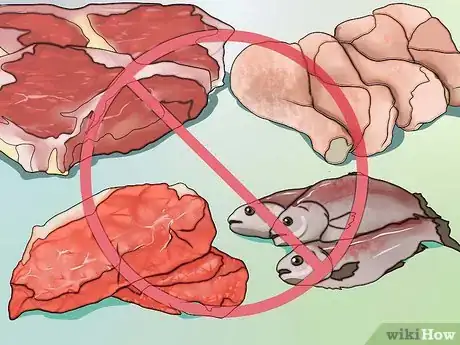


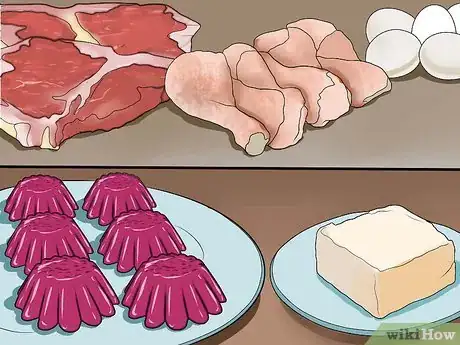
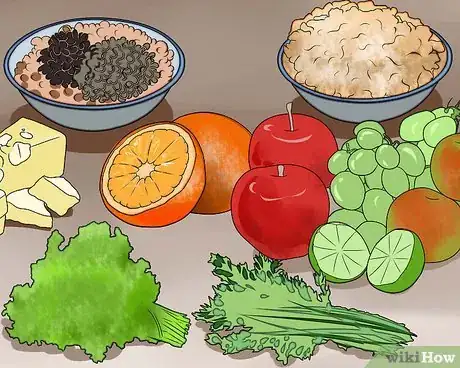
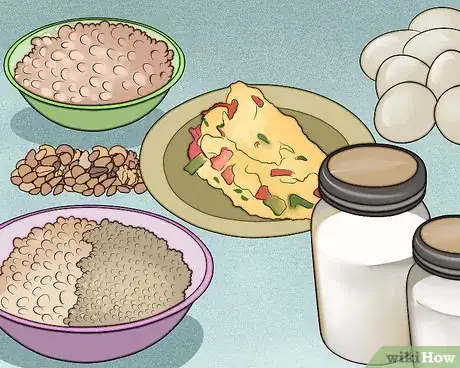
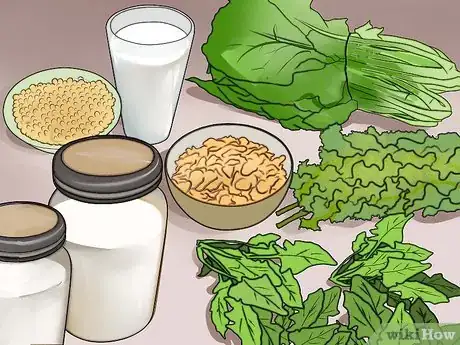
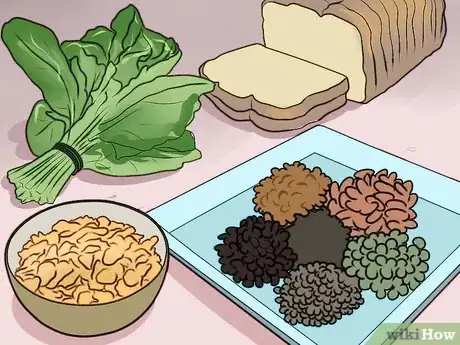
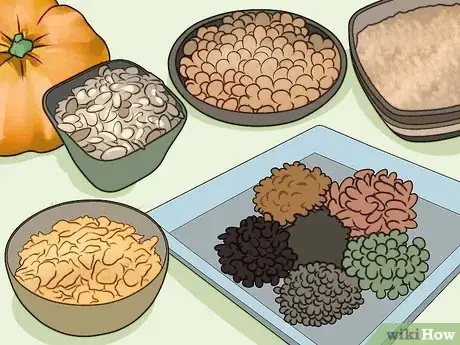
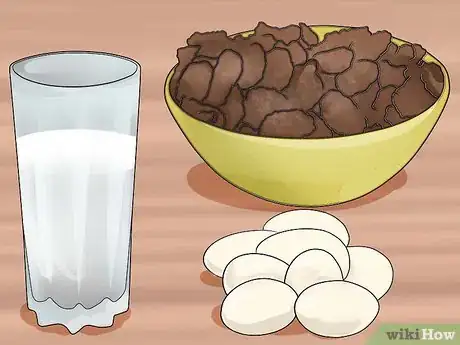
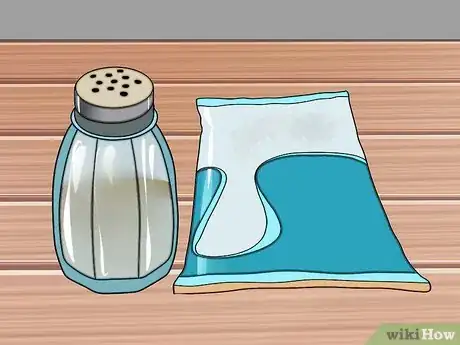
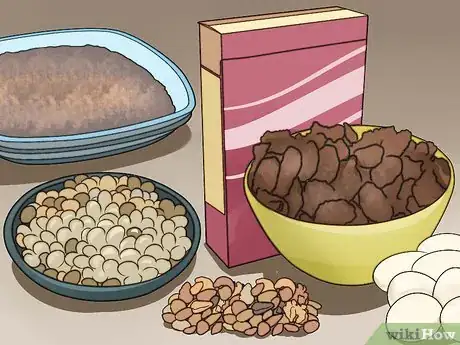
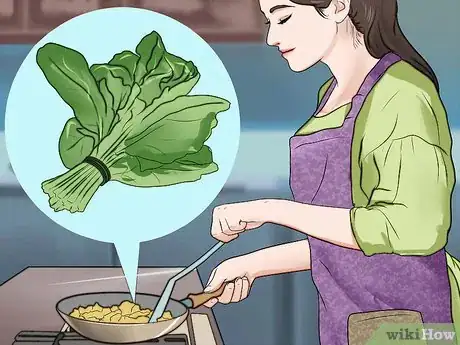

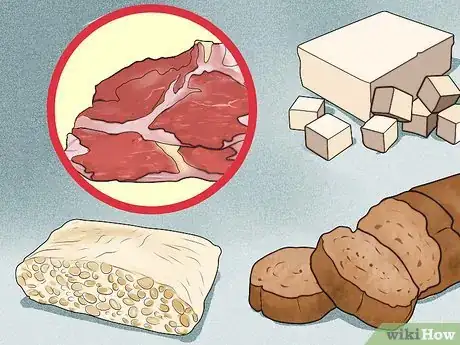
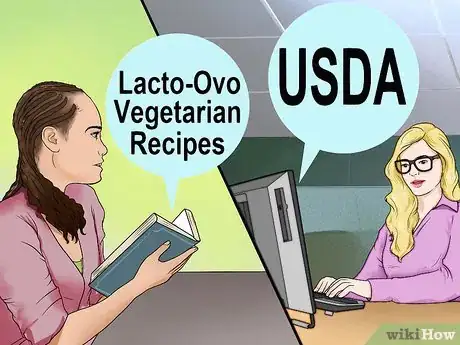

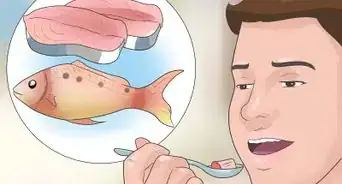

















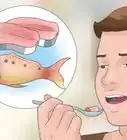




































Medical Disclaimer
The content of this article is not intended to be a substitute for professional medical advice, examination, diagnosis, or treatment. You should always contact your doctor or other qualified healthcare professional before starting, changing, or stopping any kind of health treatment.
Read More...